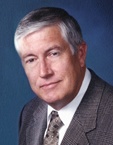The Cholesterol Delusion - part 2 of 2
 by Ernest N. Curtis M.D. ( Internal Medicine and Cardiology )
by Ernest N. Curtis M.D. ( Internal Medicine and Cardiology )
Running almost concurrently with the MR.FIT study was a clinical trial that would come to be seen as the one that provided the definitive proof of the Cholesterol Theory. The Lipid Research Clinics Coronary Primary Prevention Trial (LRC-CPPT) screened about half a million healthy middle-aged men and selected about 3800 with the highest cholesterol levels.
Half were given cholestyramine, a bile sequestrant resin that lowers cholesterol, and half a placebo. After 10 years the number dying from coronary heart disease (CHD) plus those suffering a non-fatal myocardial infarction (NFMI) were totaled for both groups. The total incidence in the cholestyramine group was 7.0% and the control group 8.6%.
This small difference of 1.6% was reported as a 19% reduction in death and heart attack by using relative risk reduction (the difference of 1.6% is roughly 19% of 8.6) in place of the less misleading absolute risk reduction (1.6%).
Furthermore, this tiny difference was given the designation of "statistically significant" by changing the criteria originally given for determination of significance after the data was in. This statistical manipulation was subjected to a withering critique by a Professor of Statistics in an article published in The Journal of the American Medical Association (JAMA).
The final "evidence" for the efficacy of cholesterol reduction came with the development of the statin drugs in the late 1980s. These drugs reduce cholesterol levels considerably more than those used previously.
A number of clinical trials were carried out with a few different statin drugs. They generally showed small reductions in CHD deaths and in NFMI in those who had a prior history of CHD. But these were never more than a few percentage points in absolute risk reduction. They have shown no benefit at all for those without a history of prior CHD.
But what was most interesting was that those that did benefit showed a total disconnection between the improved outcome and both the initial cholesterol level and the degree of cholesterol lowering attained. Those whose cholesterol level went down a relatively small amount benefited to the same degree as those whose cholesterol declined a lot.
This disconnection is known as "lack of normal exposure-response" and generally means that the factor under consideration is not the true cause of the disorder. It turns out that statins have some anti-thrombotic and anti-inflammatory properties similar to aspirin that may account for the small differences noted. In fact meta-analysis of trials of aspirin and other anti-platelet drugs show about the same degree of "protection" as the statins.
Before these facts became known and accepted, a huge boost to the Cholesterol Theory was given by Dr. Ancel Keyes in the early 1950s. He maintained that high fat diets would increase the blood cholesterol and lead to atherosclerosis and its complications.
In his Six Countries Study he correlated the percentage fat in the national diet of six countries with the incidence of death from coronary heart disease (CHD). His graph showed a near perfect correlation between the two. Critics later pointed out that the same data he correlated for six countries was, in fact, available for 22 countries at the time of his study.
He picked the six that fit his theory and omitted the 16 that didn't. These included countries with a low percentage fat in their diet and a high incidence of death from CHD as well as those with a high fat diet and low incidence of CHD. It is truly incredible that his studies are still quoted by many people after they have been shown to be virtual textbook examples of how to lie with statistics.
I find most convincing the paradigm described by Dr. William Stehbens who says we must differentiate between two different phases of atherosclerosis. First there is the slow progressive development of atherosclerosis that is an inevitable part of aging and is ubiquitous although varying in the degree of severity among different individuals. This phase plays out over several decades.
The second phase consists of the complications of atherosclerosis - most often heart attack or stroke. These complications are sudden and abrupt events brought about by a disruption in the endothelial lining of arteries.
While the underlying atherosclerosis certainly helps set the stage for the endothelial disruption, it does not provide a satisfactorily complete explanation as many myocardial infarctions are known to occur in areas where the underlying plaque was quite small.
In other words, we may be talking about two related but otherwise distinct phenomena - the slow evolution of atherosclerosis over a considerable period of time and the sudden development of a vascular complication due to endothelial disruption. Each may have its own distinct causation.
While inflammation may be involved in either one or both I would not recommend statins as therapy. The supposed benefit provided by statins in reduction of non-fatal heart attacks by a few percentage points is no greater than that achieved with other anti-platelet and/or anti-inflammatory drugs. Therefore I would never subject a patient to the potentially severe side effects of statins in order to achieve a questionable benefit that can be provided by drugs of much lower risk.
Dr. Ernest N. Curtis, M.D.
The Cholesterol Delusion Part 1
Dr. Ernest N. Curtis received his B.A. In Biological Sciences from the University of California, Berkeley and his M.D. From the University of California, Irvine.
After a Residency in Internal Medicine and a Fellowship in Cardiology, he entered private practice in Long Beach, California.
August 2011






